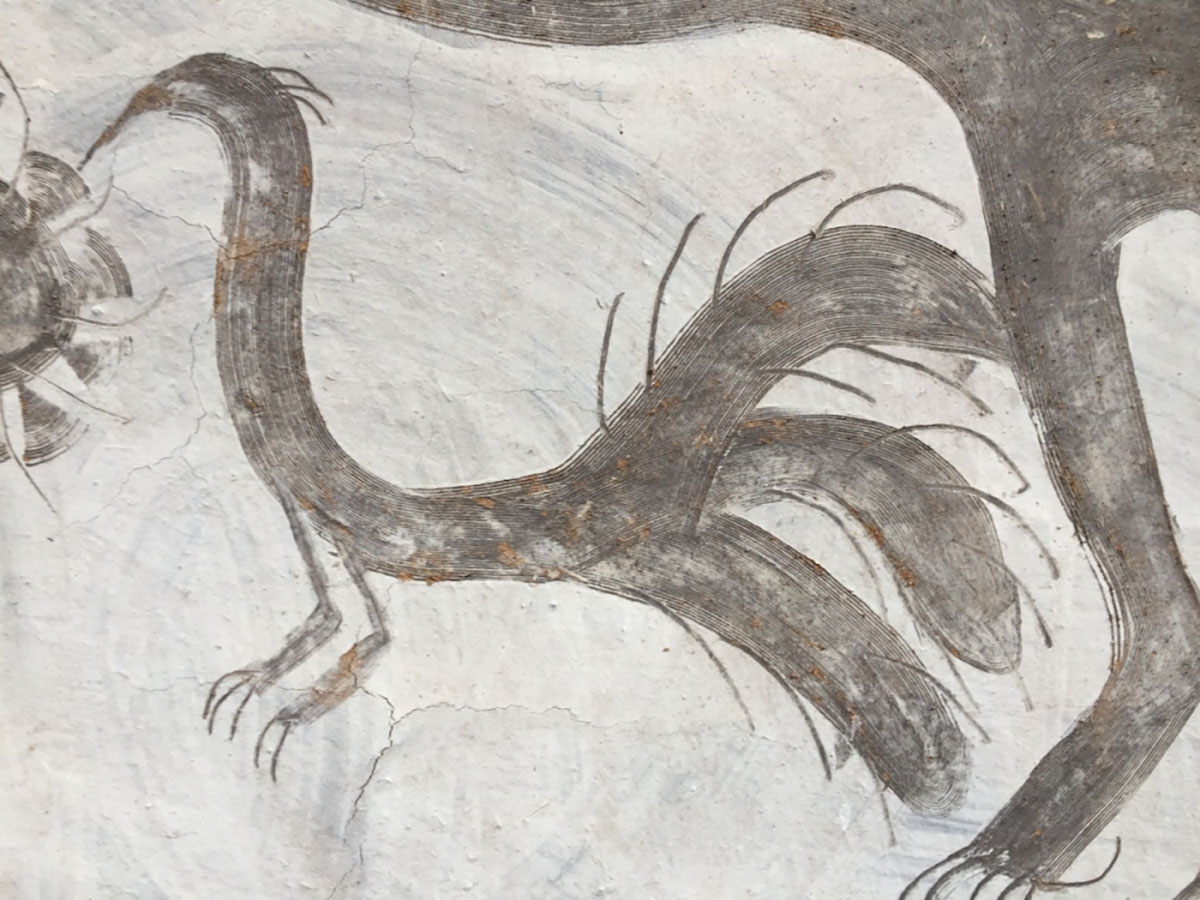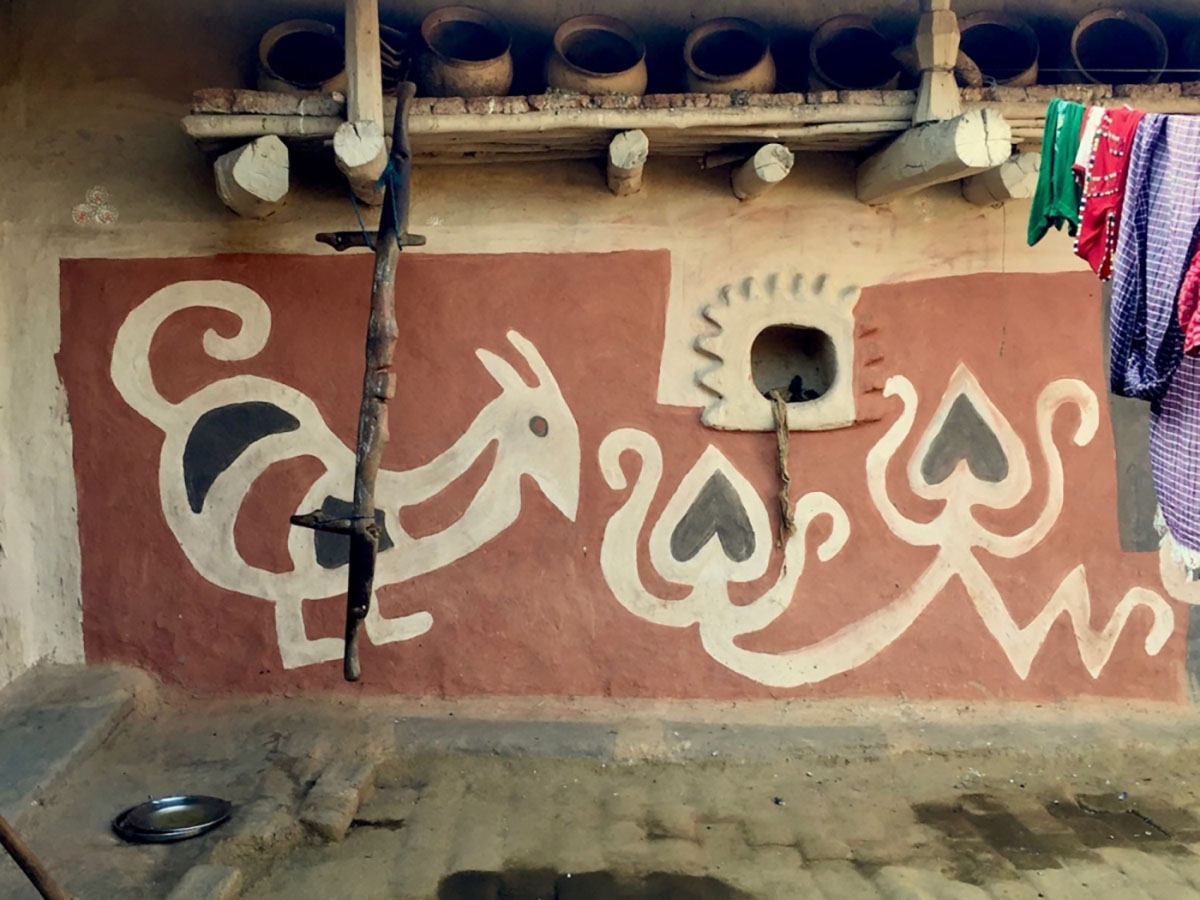ARTICLE
Khovar Painting
A traditional mural painting used to decorate nuptial chambers, Khovar painting is practised by several indigenous and artisan communities residing in the Hazaribagh region of the eastern Indian state of Jharkhand. Along with Sohrai painting, Khovar is one of two historical mural-painting traditions of the region. Sohrai paintings mark the harvest festival – also called Sohrai – in October and November, whereas Khovar paintings mark the arrival of the wedding season, which begins in January and continues until the onset of the monsoon in June. The word Khovar is derived from kho, which locally means chamber or cave, and var, the word for a married couple.
While there is little historical record of how and when Khovar painting emerged in the region, historians have linked these mural traditions to the rock art found in the Hazaribagh region, at the site of Isko and at the Satpahar Range, near the New Karanpura Valley. These sites – which were discovered in the early 1990s – are rock shelters and the painted art within these chambers has been dated to the meso-chalcolithic period (approximately 7000–4000 BCE). Historians have noted several similarities between the motifs and animal art in the rock shelters and the mural art practised by communities in the region. The painted shelters are locally also known as khovar and are believed to be ancient nuptial chambers. Among the Oraon people residing close to the rock shelters, the sites are still used for certain communal rituals.
Khovar painting is done by women of the Santhal, Munda, Oraon, Agaria, Kurmi, Ghatwal, Ganju and Prajapati communities, as well as artisan groups such as the Ranas (carpenters), Telis (oil sellers) and Kumbhars (clay modellers). Under local marriage customs, the bridegroom spends the nuptial night at the bride’s home and this chamber is decorated with murals made by the bride’s mother and aunts. Khovar paintings may also be made on the exterior walls of the bride’s home. Like Sohrai painting, all pigments used are derived from different locally-found soils.
A characteristic feature of Khovar painting is the use of the comb-cutting technique. The process begins with the application of manganese-rich clay, almost black in colour, onto a repaired and plastered surface. Once the black clay dries, the women apply a layer of white or cream-coloured clay and, while this layer is still wet, use pieces of comb or their fingers to scrape the layer and create paintings. The lighter layer of clay may be made of white kaolin (locally known as charak maati), cream-coloured earth (dhudhi maati) or yellow ochre (pila maati). The comb-cutting technique is also used to create Sohrai paintings, but these are distinguished from Khovar paintings by a wider colour palette. Themes commonly used in Khovar painting include the forest, aniconic forms, local animals and plants as well as geometric and linear patterns. In the Kurmi communities, Khovar art also features depictions of female animals, with their young shown in the womb, and human-animal conflict.
With mud houses gradually being replaced by cement houses, Khovar painting is on the decline. The communities that practice it are also facing the challenges brought on by large-scale infrastructure projects in the region and the state. There has been an effort to help Khovar artists adapt the technique to paper or canvas. In such projects, the manganese-rich clay is dissolved using glue and water and then spread over the paper or canvas using cloth or a brush. The second, lighter layer is applied, and the pattern is crafted using a fine comb.
In 2019, Khovar and Sohrai painting were accorded a Geographical Indications (GI) tag by the Government of India.
Bibliography
Our website is currently undergoing maintenance and re-design, due to which we have had to take down some of our bibliographies. While these will be re-published shortly, you can request references for specific articles by writing to hellomapacademy@map-india.org.









